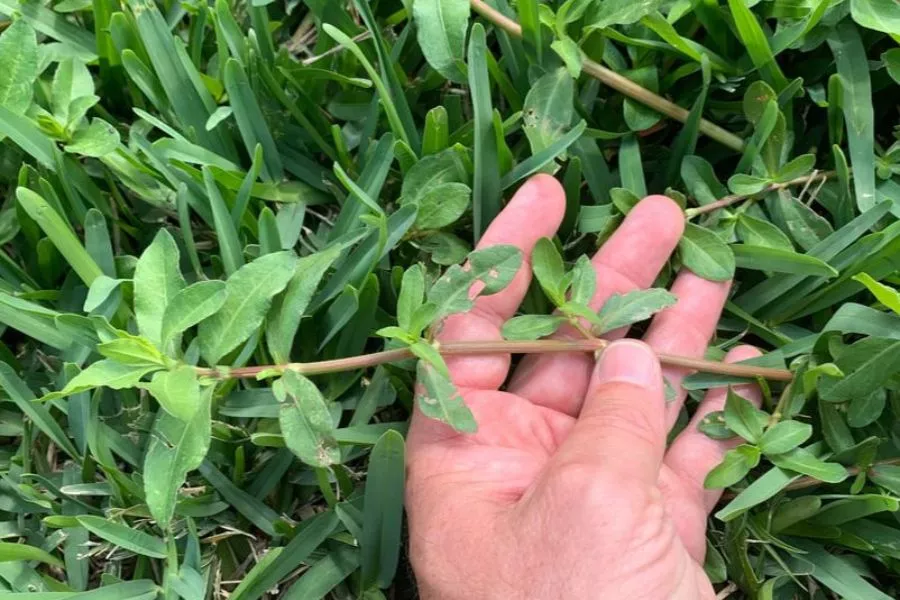Weeds are the undesired plant in a specific situation; sometimes, it is called a plant in the wrong place. So, weeds are the kind of plants you don’t want to see in your lawn or don’t desire for your yard. Weeds are not individual but a universal problem for every gardener and their invasion in your vegetable garden, flower bed, or lawn.
In this article, I will explain to you the best way of controlling weeds by applying a liquid weed killer. Also, I will clarify the best time to apply liquid weed killers without hampering the desirable plant.

Best Time to Apply Liquid Weed Killer
Apply the weed killer when you have at least two inches of new growing weeds. When they are actively growing, commencing sometime in April and finishing sometime in late September or early October. A lawn owner should have to choose the best weather and the best application timing to get the best result, so proper timing and clear weather are essential to avoid wasting your time.
Usually, a weed killer works best when the weather is dry but is too hot for several days. When it is monsoon season and the rainwater, even a light shower can wash out the herbicides from the upper surface that need to treat and can ruin your efforts. There will be a residual effect of herbicides that will get diluted by the rain.
Another factor is the wind, mainly when you apply glyphosate or similar non-selective herbicides. It can cause the killing of all other plants such as vegetation, flower, or vegetable which came in contact with it. Wind can cause a more expansive space of spraying chemicals onto the different areas of land, which can severely kill the desirable plants.
You can also use white vinegar as a weed killer as well.
Season-based Best Time to Apply Liquid Weed Killer
- In Summer, early morning and late afternoon are best for applying weed killers. It will be more convenient and effective for your lawn at the end of the season because the spray may evaporate in the heat of the full sun, which prevails in the early summer. Avoid using it in the early afternoon in Summer because it can slow down plant growth and dry out the leaves quicker, reducing the amount of absorption of weed killers.
- Fall is an excellent season to apply because the weeds are the most vulnerable in this season. By spraying postemergence herbicides, the weeds will survive in the winter. You need to apply to treatment at two-week intervals.
- In winter, mid-day, when the temperature is high, it is best to apply systemic herbicides because it works best during warmer conditions.
- In Spring, It remains warm, and it is the best time to apply liquid weed killer. It has a great chance to apply in early spring because pre-emergence herbicides prevent weeds from germination. You have to use two treatments at eight-week intervals.
How To Apply Liquid Weedkiller?
Spray liquid weed killer in wide, sweeping motions, but just once or twice per area. Low spots and corners might collect runoff. Avoid injuring nearby plants and soil by applying sparingly.
- Apply the liquid weed killers using a sprayer.
- Apply it on dry grass because wet grass will dilute your weed killers.
- Apply it in broad and sweeping motions in calm weather.
- Must avoid one or two sweeping to an isolated area.
- Avoid frost and freezing conditions.
- Apply lightly in low spots such as corners where runoff can accumulate to avoid plants and soil damage.
- Don’t apply it only to the soil.
- Though it absorbs through the leaves of weeds, you have to ensure that the spray must contact the weeds for at least one or two days.
- Avoid when it is strong sunshine.
- Avoid mowing before application because it reduces the number of leaves that would absorb the herbicides.
Post-application strategy:
- Avoid mowing your lawn at least one week before the application because leaves absorb the weedkiller and need enough time.
- Hand-pull the weeds which can survive the weed killers with their roots.
- Don’t force yourself to apply over these plants; it is full of waste and failure of effort.
- After removing weeds, you can mow your lawn grass and notice that any kind of seeds can not spread.
- Ensure favorable conditions such as adequate sun, interrupted water supply, and proper mowing to ensure that the weed seeds can not grow up again.

Why it needs to control weeds?
Weeds are the most harmful plant for lawns, and they can cover a lawn very quickly and damage your grass or plants very badly. It competes with lawn grass or plants for light, water, and nutrients. Finally, it appears as a most dangerous case for lawns and makes your lawn plant weaken and kill after a certain period. So, you must control weeds to create a healthy and evergreen lawn, and liquids are ideal and effective to ensure the full coverage of the weeds and often work very rapidly.
Before spraying:
It is one of the crucial parts for you to understand how weed killers work before you spray. Is the sprayer weed killer can kill the weeds perfectly without damaging your grass or other plants? A weed killer can block protein formation or destroy root formation and interfere with the growth of weeds. It is not as dangerous as pesticides, but you must be careful when you apply them. You must be known some basic information before spraying.
Safety procedure:
You have to bear in mind that safety procedures are first for you as well as others. So, concentrate on this issue from the very first thing. Wear personal protection equipment like long sleeves, gloves, and goggles, and use a respirator and protective headgear. You must read the label with care to know the distance you need to stay out of the treatment area. It is essential to keep your pets indoors and children away from the sprayed area before and after.
Selecting the correct weed killer:
It is one of the best wonders and difficult for you to select the best weed killers from huge ones. The different chemical industries continually offer new products of weed killers and remove the older ones because of environmental regulations. So, be careful about your choice, here we always recommend you use the new ones. It is also important to know that how does long it take for weed killer to work.
Double-duty weed killer products can be a very effective way for you to tackle multiple problems. When used for a broadleaf, it is safe for most of the lawn, but it can not affect the crabgrass. So, you have to find the correct one that can kill the broadleaf weeds and car grass weeds. Maybe it is somewhat costly, but you can get a double result with less labor.
Pre-emergence weedkillers:
Pre-emergence herbicides or weed killers are mainly used to control annual weeds, especially Summer weeds. It helps the lawn to disrupt the life cycle of weeds in an established lawn. These herbicides are used to prevent the germination of weed seeds.
To get a satisfactory result, lawn owners should apply the herbicides before the weeds seeds become germinate, usually at the time of early spring. It can be used at any time of day, and these create a chemical barrier in the soil to prevent weeds from emerging. A lawn owner needs to apply twice to control invasive weeds like crabgrass at an interval of eight weeks after the first application. E.g., Dithiopyr and Benefin.
Post-emergence weedkillers:
Post-emergence herbicides or weed killers are mainly used to kill the weeds upon contact, absorbed by the plant tissue. It can be systemic or non-systemic. Systemic works effectively as moving through the plants to their roots when the plant is in an active growing period. Non-systemic damages the plant tissues and can be applied at any time of day.
It will be very effective for gardeners applying postemergence on the new and young weeds. It is used widely because of the maximum gardener face of lawn weed problems after establishing the weed population, such as woody shrubs. A lawn owner needs to cut the weed down to the surface level to get a promising result; apply the herbicides when the new leaves and shoots appear becoming a few inches in height. As we mention, it works best on fresh and young weeds. E.g., Glyphosate.
Frequently asked questions
How long for weed killer to work?
This is the most critical question, “How Long Does it Take for Weed Killer to Work?”. It largely depends on the type of herbicide. Some weed killers kill weeds within a few days. On the other hand, some are needed a week or more. Also, it depends on the place where you need it and why you need to treat it.
Due to the temperature concerns, you need to apply weed killers early enough. You should concern about the residual effect of weed killers. Some have a high residual impact and remain toxic to plants for months. You must carefully read the label to ensure how long it takes to work and how long it will stay on your lawn.
How often can you apply weed killer to your lawn?
It largely depends on what type of weed killer you are going to use. So before purchasing a weed killer, read the label carefully to ensure it. But many of the weed killers are designed for a maximum of two treatments per annum with different active ingredients. Two treatments 7-8 weeks apart from one another will create the optimal result. One is in early spring, then the other 7-8 weeks later. Also, you can make your last application in the fall; October is best because weeds can’t survive in winter.
Do you put weed killer on before or after rain?
Just a few days before it is expected to rain, apply weed and feed. This reduces the likelihood of the goods being lost or contaminated by washing away into nearby waterways.
Final Thought:
The above consideration assumes that the best time to apply liquid weed killer is in spring and fall because we can not spray them in hot weather and freezing weather. And in spring and fall, there remains a moderate temperature that is very effective in executing weed killers’ works.
Spray the weed killer in early spring and let another application for 2 months later. You can also apply it in the fall because the weeds don’t survive in winter, and in this case, October is perfect for spraying. I believe now you can use your liquid fertilizer in a very effective way at the proper time.



